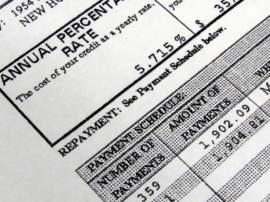
How to Save Money

The first thing you need to do if you want to ever be able to invest your money properly and use your income as a tool to gain wealth instead of just a tool to make a living then you will need to learn how to save money. Saving money may seem like an easy task but it requires, budgeting, discipline and the elimination of unnecessary expenses that eat away from your savings.
Eliminating Unnecessary Debt
The first step in how to save money is to eliminate your unnecessary debt. This includes credit cards, unnecessary luxury items, and any other debts that you can live without. Paying off your credit cards should be your first step in how to save money. If you have a balance on your credit card of $3,500 you can expect a monthly interest fee of between $50 - $75. If you have any hopes of increasing your wealth it is imperative that you eliminate this debt. The interest rates that you are charged on a credit card are higher than any other interest rate that you will be subjected to and finding an asset that will counteract that interest is slim.
When first learning how to save money it should be your number one job to eliminate this expense. Every month you get a statement you should make it your job to pay the monthly interest rate and, in addition, pay down your debt in a way that is reasonable for you and will allow you to pay down your debt within a reasonable period of time.
In addition, you will want to eliminate any unnecessary luxury items. Most millionaires did not become that way by driving the newest model car. Millionaires made their wealth by driving used Toyota Camry’s and using the money they saved from the difference to invest in interest bearing, lucrative investments. If you are leasing an expensive automobile; unless you need it for your job, such as sales, then you should consider ending your lease at the nearest opportunity and opting for a moderately priced, reliable, vehicle.
It is the elimination of these unnecessary debts that will allow you to garner the extra savings that you need in order to save money. The old adage stands true, “it takes money to make money.” If you are constantly making payments on credit card interest and paying monthly bills for unnecessary, and unaffordable, luxury items then you will not have that opportunity.
When you eliminate these expenses you should consider them, not to be extra money, but rather pretend like the debt was never eliminated. If you take the money that you would have spent on theses unnecessary expenses, put it in a savings account and forget about it then you will be surprised how quickly that money will accumulate. Within a short period, around a year or so, you should have the capital to learn how to save money in lucrative ways.
Creating a Budget
When you are learning how to save money you will, at the same time you are downplaying your unnecessary debt, want to start a budget. Budgeting is the term used for keeping track of your financial status and using a number of resources to ensure that you are making sound financial decisions that will keep you from losing money, falling into bankruptcy and improving your net worth.
Budgeting can be difficult and in many regards require a great amount of discipline. All individuals who you would consider “rich” did so; not because they have high paying jobs, although that helps, but because they managed their budgets and income. Instead of spending their paychecks on short term, and material, benefits these individuals budgeted their income and invested their funds in assets that, over time, increased their wealth.
Budgeting does not make you wealthy over night and often it can take years, or decades, to realize that you careful financial planning has made you extremely well off. When learning how to save money you will want to compile all of your income and presently accessible liquidated, or easily liquidated assets. This includes bank accounts, mutual funds, and your income. In addition, you need to assess your liabilities. This includes your monthly car payment, rent, mortgages, utility bill, phone bill, cable, average grocery and entertainment expenses, and any other expenses that can be put into a fixed monthly amount.
Once this is done you will subtract your liabilities from your income. If, when you do that, you come up in “the red” then it is imperative that you rethink your spending habits. Use less utilities, downgrade your phone plan, lose your HBO, and maybe even think about moving to a less expensive home or apartment. If you are in “the black” then you are ready to learn how to save.
How To Save Money
Once you realize that, after your monthly bills, you are in “the black” it is time for you to start saving your money. This can be done in many ways but the simplest is to, if you don’t have one already, open a savings account. A savings account in a banking institution is a stable way to save your money. The upside to a savings account is that the funds are easily accessible by going to your banking institution and making a withdrawal. The downsides are that you can easily access your savings account and make withdrawals. When you are in need of money it is easy to fore go your savings plan for immediate gratification. Another downside is that savings accounts usually have very low interest rates, usually around 2%. Considering the rate of inflation a savings account will not help you gain savings and should only be used for short term saving while you look for, and save, for more lucrative saving opportunities.
A better way of saving is to take your money and to put it into U.S. Savings bonds. The most stable form of bond is the United States Savings Bond. A United States Savings Bond is almost guaranteed and they come in many different forms. The two most prevalent are the EE savings bond and the I savings bond.
The EE savings bond is characterized by a stable, long term investment. WIth EE savings bond the federal government will require a long term investment of 20 years in order for the bond to reach its maturity level. There are two types of EE savings bonds: paper EE savings bonds and electronic EE savings bonds. The most important distinction between the two is their return on investment. With a paper EE savings bond the investor will get a yield on return of the value he invested upon the maturity of the bond. This means that if you invested $5,000 then in 20 years you will receive a payment of $5,000 plus the interest accumulated over that period of time. In contrast, an electronic EE savings bond will require you to pay half of the value of the savings bond and upon its maturity you will receive the face value; essentially allowing you to double your investment. You are not required to keep your investment for the 20 year period in either form of EE savings bonds but their is a penalty for early withdrawal.
The disadvantages to EE savings bonds are the long maturity length, and the fact that an individual is allowed a maximum of $25,000 of investment per year. EE savings bonds are exempt from state and local taxes but they will be used to calculate federal tax income. In addition, EE savings bonds do not adjust for inflation.
The other type of United States Savings Bond that is very prevalent is the I bond. An I bond is a U.S. savings bond where the yield on maturity is calculated as the fixed rate of return plus inflation. The I bond is periodically adjusted to factor in for inflation and the yield at the end of the maturity will be in a way that you will not lose money based on the inflation rate. One of the disadvantages of an I bond is that it is considered a zero coupon bond. The interest that accumulates over the lifetime of the bond is automatically re-invested into the I bond.
U.S. savings bonds should be used for long term savings and once you purchase a bond it should be forgotten. When looking at the maturity date of bonds you should look at when you may need the money back and how much money you have invested. If the purpose of the savings bond is to accumulate savings for retirement or long into the future then you may want a 20 year bond. If you are looking to save for vacations, future home purchase or a future long term investment like real estate, then a shorter term bond may be more beneficial.
The most promising way to save for the future is to invest in your companies 401k. A 401k is an savings plan that you set up with your employer to save for retirement. The retirement savings account has two obvious benefits. The first benefit is that you will be able to save your money in a savings plan through a consistent allocation from your paycheck into your 401k. In this way you don’t even know how much your saving. The amount will be automatically taken from your paycheck and, in addition, your employer will contribute an equal amount to your 401k. So if you contribute $100 a month you will actually be putting $200 a month into your 401k. Another advantage is the time value of money. Your investment in a 401k savings account will allow you to avoid current taxes and put your money to work for you instead of being lost to the government. On the same note, by investing in your 401k you may actually be lowering your tax liability. If you are in the 28% tax bracket and you decide to invest $1000 that $1000 a month will not be included in your taxable income and you may move down to the 20% tax bracket.
Staying Focused
An important aspect in saving your money is to maintain discipline and set a goal for yourself. Money is just a figure and doesn’t really correlate with incentive to save. For this reason you should set a reward for yourself. For example, if you are able to save $10,000 by the end of the year you should reward yourself with a $2,500 vacation. You should set this goal at the beginning of your savings plan and, unlike having your goal just to save money, it will inspire you and give you motivation. It is also better in that you will see a light at the end of the tunnel instead of a constant, repetitiveness. Your savings goals should be realistic. Do not expect that you will be able to save $10,000 if in order to do that you will have to eliminate all pleasures from your life, live off of bologna sandwiches, and use one ply toilet paper. Live within your means but allow for some leeway so that saving is not a chore. The best way to destroy your savings plan is to set your goals too high and lose interest at the first sign of adversity.
You must stay focused on the future. You will not realize gains from savings immediately and you may not even have any real gain after a year or two but it will happen if you budget accordingly.
NEXT: Personal Budget





















